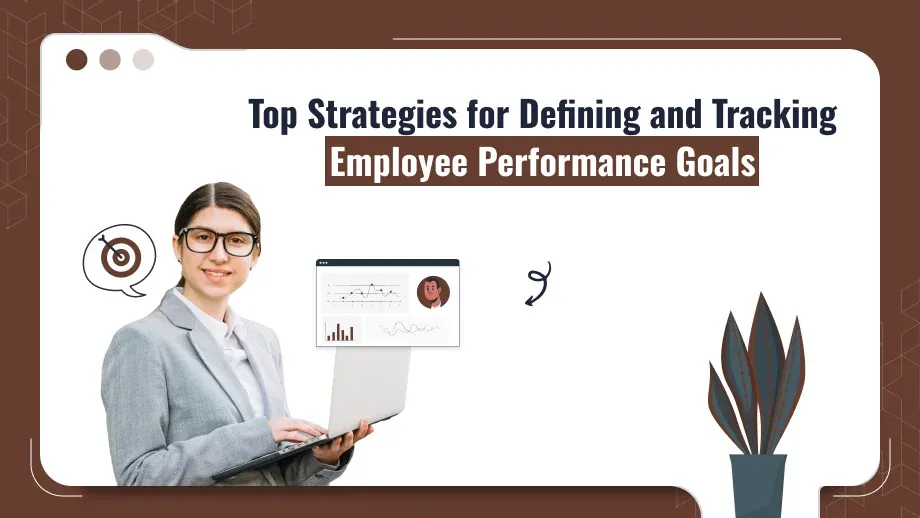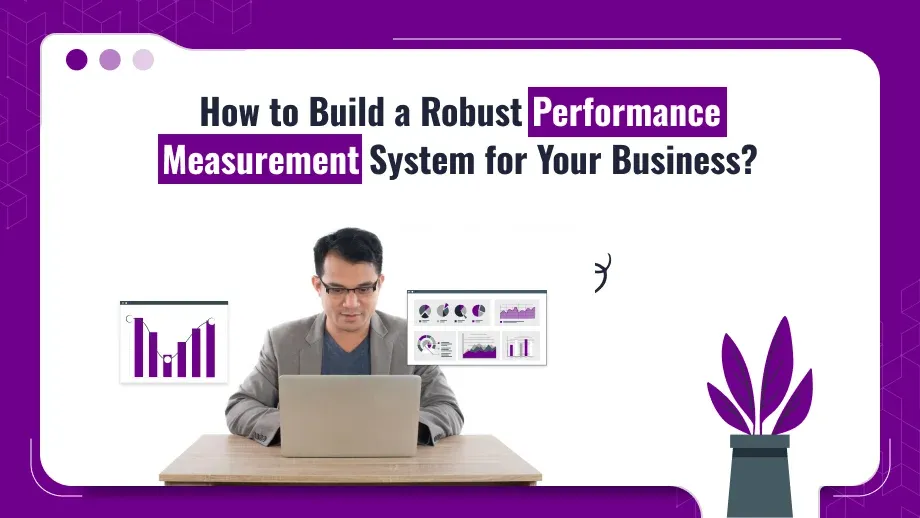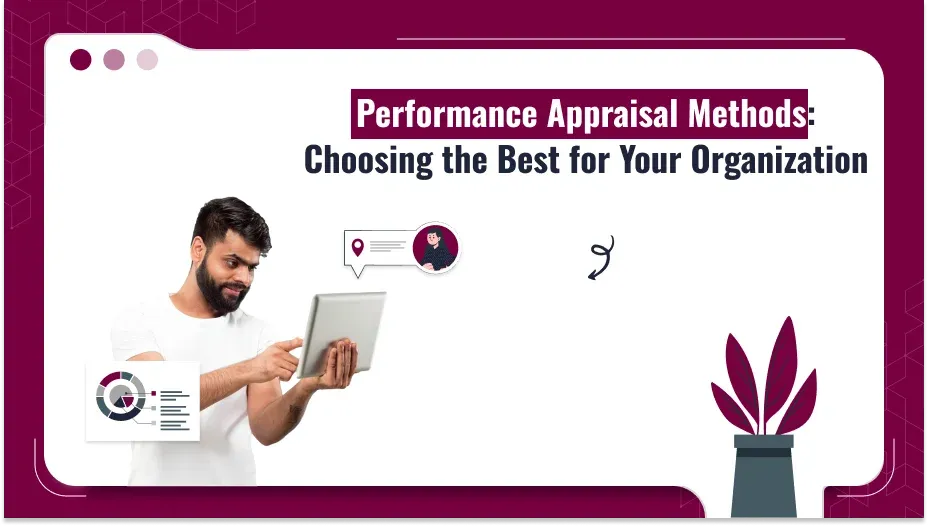
Competition in business is built through the successful accomplishment of company-wide goals, which are initiated through the definition and effective management of employee performance goals. These goals orient individual contributions and align employees’ efforts toward the vision of an organization. By formulating clear goals, employees know what they do, develop their skills, and feel more involved in activities; consequently, the whole organization is benefited. In this blog, strategies for the setting, tracking, and evaluating of the performance goals of employees shall be discussed, improving their utilization of tools such as HRMS & payroll software and performance management systems to ensure their maximum effectiveness.
Why Employee Performance Goals Matter?
It is believed that with structured employee performance goals, employees are guided, motivated, and directed toward clear, measurable objectives of achievement. This will help both the individuals to sustain daily effort aligned to their growth and the mission of the organization, thus having a positive impact on morale and productivity. Companies that value the performance management of employees have benefited from high job satisfaction since employees understand clearly how their role contributes to success.
Objectives of Performance Management System
The performance management system must provide ongoing feedback to the employees. It will also define the strength areas to be improved, and ensure that the employees meet or exceed the standards of the organization. Other key objectives are as follows:
Alignment with Strategic Aims: Confirmation that individual performance contributes to the bigger companies’ goals.
Continuous improvement: Providing opportunities for employees so that they can upgrade their skills and performance.
Clear Communication: Daily feedback channels where the managers and staff members can discuss their problems in time.
Most Common Models Followed for Employee Performance
Employee performance management requires choosing an appropriate structured model that supports clearly written, measurable, and achievable goals. Here is a few commonly utilized models:
SMART Objectives: The term SMART is Specific, Measurable, Achievable, Relevant, and Time-bound. These criteria help in setting realistic and very well-defined objectives for employees so that the actual level of progress made becomes easily evaluative. SMART objectivity in employee performance goals examples guides employees to pay more attention towards physical results.
OKRs (Objectives and Key Results): OKRs enable the organization to set challenging objectives and provide clear results that need to be achieved to meet said objectives. It is an excellent framework, most especially for organizations seeking challenging goals, as they are growth-oriented.
Balanced Scorecard: This is the framework through which balanced approaches in performance evaluation goals across a variety of perspectives, such as financial performance, customer relationships, internal processes, and innovation, may be pursued.
These frames would enable HR managers and leaders to lay a basis for employee performance review, hence paving the way for measurable development.
Individual Goals in Convergence with Organizational Objectives
Aligning the goals of employees’ performance with the objectives of an organization is very important because it works towards creating an ecosystem where all employees are working for a single mission. Employees are encouraged when they get to see the implication of their work to the overall organization.
For example, if an organization aims to enhance the levels of satisfaction of customers, then examples of performance objectives of this type toward the customer service would be reducing the response time or raising the quality of responses. If the objectives of the employees are aligned with the priorities of the organization, then the employees can own responsibilities, and their work will have visible implications on the success of the organization.
Formulation and Communication of Performance Review Goals
An objective for a performance review should clearly inform an employee what is expected to happen or be achieved by a specific timeframe. Proper appraisal goal setting encompasses all the following:
Clarity and Transparency: Clearly define each objective, along with explanations about why it’s important relating to an employee’s role and company success.
Regular Check-In: Ensure the goals are relevant through regular one-on-ones. Change your goals if corporate priorities shift, or an employee needs more support.
Constructive feedback: In a review, there should be examples of areas for improvement and action steps to achieve the goal.
Clear goals of performance management system contribute to employee growth and career development. Managers can maintain transparency and accountability throughout the cycle by documenting these goals with HRMS & Payroll software.
Drive success by setting clear and measurable employee performance goals.
Begin aligning your team’s efforts with impactful objectives now!
Examples of Employee Performance Goals by Department
To preserve structures and clarity, the heads of departments must forward concrete examples of performance goals of employees across the departments. Here are a few examples of different functions:
Sell: Upsell and cross-sell to boost quarterly sales by 15%.
Customer Service: On average, the time required to respond to customer queries is less than 24 hours.
Marketing: Increase social media engagement by 25% in the next six months.Product Development: Deliver the new feature a week before scheduled.
HR: Streamline recruitment, so that within the subsequent quarter, the business cuts 10% time-to-hire metric.
These performance goals examples will ensure that most employees in a certain role have hard, job-specific goals that relate to the overall strategy of the company.
Monitoring Employee Performance Goals with HRMS & Payroll Software
Accurate and efficient tracking of the performance of employees is possible by the use of HRMS & payroll software application of technology. It provides automated tracking, analyzing performance trends, and accurate data toward progress in employees.
Applications of HRMS & payroll software allow companies to perform the following functions:
Automate goal tracking: Monitor the progress and measure results without any manual interaction.
Make appraisal simple: Simplify reviews on performance by ensuring all correct data regarding performance is available in the same system.
Actionable reports: Make changes in goals, give feedback, and identify outstanding top performers using real-time data.
This integration allows managers to see deep analytics of employee performance goals at any moment, hence guaranteeing data-driven decision-making.
Employee performance assessment and goal adjustment
Employee performance assessment will enable companies to understand how the employees perform and highlight their strengths and points for improvement. Regular assessments can help a company adjust goals to fit much better onto an employee’s development path and ensure that they are well-driven and challenging but achievable.
A successful employee performance assessment entails.
Objective Criteria: Evaluating it with measurable metrics, determining their performance.
Behavioral Insights: Experiencing and recording the employee’s behavior, teamwork level, and level of engagement.
Real-time Realignments: Change in objectives to become relevant; it may be due to changing company priorities or for personal development.
These appraisals are part of the entire employee performance management system that inspires more learning.
Examples of Performance Evaluation Objectives
The performance evaluation objectives provide a practical guide to personal improvement and skill building for employees. Here are a few examples of appraisals across different domains:
Professional Development: Acquire a new certification or training within the next six months.
Quality Objectives: Increase the number of correct completions by 15% during the quarter.
Productivity Objectives: Be able to finish projects 10% sooner at the end of the quarter than at the beginning
Performance-evaluation goals such as the above can also be tailored to the job and the person’s skills and abilities, since it facilitates development and holds individuals more accountable.
Utilize a Performance Management Application for Goal Setting and Monitoring
It enables the usage of a specialized performance management tool for creation, tracking, and assessment of employee performance targets. Some of the reasons these tools offer include the following:
Data Visualization: It gives the ability to track performance data of employees over time and for managers to identify patterns or problems.
Transparency: Employees will be able to access their targets anytime so they will know exactly what to work upon.
Streamlined Reviews: It helps simplify appraisal processes because goal data is consolidated into one system.
With a performance management tool, organizations will, for the first time, be able to have a structured approach in the management of employees’ performances by ensuring that not only are goals set but also attained.
Feedback as an Element of Employee Performance Management
Feedback is the important element in employee performance management. Regular feedback enables employees to adjust their efforts to accomplish goal achievement and areas that need improvement. Managers should endeavor to achieve feedback that is:
Present problems and acknowledge successes in the present
Forward: Give clear coaching that helps employees to grow without offending
Cooperative: Involves employees in planning and goal setting in order to have more of a sense of ownership and motivation
Use feedback appropriately so that employees are kept oriented to employee performance goals and can adjust according to that
information
Best Practice of Setting Goals for Appraisal
The objectives for appraisal goal setting have to be challenging for the employees, but goals must also be realistic. Here are some best practices for effective appraisal goal setting:
Employee Involvement in Goal Setting: Employee buy-in and commitment should increase by involving employees in the process of goal setting.
Development Goals: Goals that are designed to gain skills or movement towards a new career help build a growth mindset.
Review and Revise Goals: Goals should be reviewed periodically for purposes of refreshing them to remain topical and achievable.
Appraisal goals should indicate professional development and directions for employees on how to get to expectations or beyond.
Continuous Monitoring and Review of Employee Performance Goals
Monitoring employee performance through review keeps the manager informed on when progress is being made, solves problems early, and ensures that goals remain topical. Following are some advantages when tracking employee performance continually:
Time-bound Interventions: Performance issues or barriers are addressed in the shortest time possible.
Re-alignment of Goals: If priorities change, goals are adjusted to fit within organizational priorities.
Employee Engagement: Ongoing monitoring sends a message to employees that progress counts and keeps employees engaged.
Continual monitoring and review are two critical components of effective employee performance management, which can help drive achievement.
Usability of HRMS & Payroll Software for Comprehensive Performance Monitoring
The integration of the HRMS & payroll software with performance management systems enables transparent tracking, allowing for real-time access to data. This brings about more accurate performance review processes, ensuring that the following is achieved:
Easier Goal Monitoring: It automatizes the tracking of any set of performance measurement metrics.
Increased Data Reliability: Reduces human failure when it comes to data input.
Better Reporting: It provides rich reports that can be used to gain insight or inform a decision.
HRMS software supports employee performance management by allowing the employee records and performance data to be managed using a single platform.
Achieve Culture of Success and Culture of Growth by Setting Organizational Goals
For a culture of continuous improvement, employees must be challenged by performance goals that support learning and development. How to do that is:
Ambitious goals: Set up organizational goals that challenge people to go beyond their comfort zone.
Celebrate Successes: Welcome successes to motivate employees to do more in future efforts and reinforce desired behaviors.
Develop the Means: Provide training and development in support of accomplishing goals.
The establishment of a performance goal-related culture aids employees in feeling motivated and engaged in their work, hence enhancing productivity in all jobs by all employees.
Conclusion: Strategic Use of Employee Performance Goals
Setting and following employee performance goals has always been the cornerstone of good management and success within an organization. Well-defined goals, when aligned to corporate objectives, motivate and engage employees in performing better. Best practices, such as utilization of frameworks, making the most of technological benefits like HRMS & payroll software, and fostering a culture of continuous improvement, help organizations build high-performance teams.
Thus, with critical goals, coherent feedback, and performance monitoring conducted regularly, one can encourage attainment and growth in companies. By implementing these kinds of strategies, organizations are well-set on the way to attaining sustainable success through meaningful, measurable goal-setting, employee performance management, and much more.





